Japan. The land of the samurai and one of the very few countries on earth that have never been colonized. This also means that their religious traditions are purely a product of the country itself. It explains why the country has a rich and distinct tradition of Japanese gods. Or, as the people of Japan more often call them, the kami.
Table of Contents
Shinto Religion and Japanese Buddhism

Most of the Japanese gods and goddesses that are discussed have their roots in the Shinto religion. But, Japanese mythology also sees many other gods. In fact, many Buddhist temples are still erected to this day, with many Japanese Buddhist kami related to them.
The Japanese mythology that is related to the Shinto religion can be considered the more traditional Japanese mythology. That related to Buddhism is a product of the Asian melting pot that Japanese culture later became.
The Zöka Sanshin: Cornerstones of the Creation Myth
If we follow the Kojiki, Japan’s oldest extant chronicle of myths, Japanese gods can be divided into three groups. Since it’s the oldest chronicle, these groups can mostly be considered part of the Shinto tradition. The first group of gods in this tradition is known as the Zöka Sanshin and is responsible for the creation of the universe.
Ame-no-minakanushi: Central Master
Meaning of the name: Lord of the August Center of Heaven
Family: The literal creator of ‘family’.
The very first Japanese god, or first recognized Zöka Sanshin, goes by the name of Ame-no-minakanushi. Talk about tongue twisters.
The Shinto deity is believed to be the first god that popped up in the heavenly realm of Japanese mythology, better known as Takamagahara. While before everything was chaos, Ame-no-minakanushi brought peace and order to the universe.
While most creation gods have something to show off with, Ame-no-minakanushi was no show off at all. In fact, every Zöka Sanshin is believed to be invisible to mere mortals.
To add, Ame-no-minakanushi is believed to be one of the patron deities of the Taikyoïn, or ‘Great Teaching Institute’. Taikyoïn was part of a short-lived government installment between 1875 and 1884. The institute developed propaganda and doctrinal research and ran civic education programs.
These efforts were focused on propagating the excellent fusion of Shinto tradition and Buddhism. Or, that’s what the government wanted the public to believe.
From the start, the smooth fusion was contested. This was mainly because the Buddhists weren’t happy with their representation. Being the patron of the fusion, Ame-no-minakanushi could’ve definitely done a better job. His failure is one of the reasons why he is predominantly known as a Shinto god, rather than a Buddhist god.
Takamimusubi: The High Creator
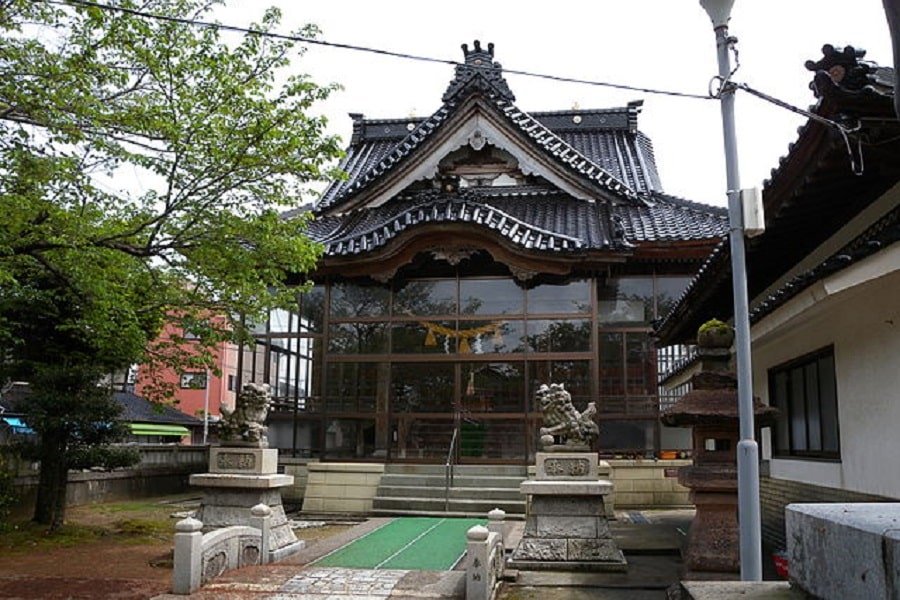
Meaning of the name: Lofty Growth
Family: Father of several gods, like Takuhadachije-hime, Omaikane, and Futodama
Takamimusubi was the god of agriculture, sprouting into existence as the second Japanese god to ever exist.
It’s not a really inspiring deity, just like the other Zöka Sanshin. Sure, they are essential for the creation of the earth and heavens, but little is known about them. Their stories aren’t written in books, nor are they depicted in paintings. Even in the oral traditions, they show up in but a few myths.
Only when it’s really needed, and other kami couldn’t handle a request or problem themselves, these Shinto deities would pop up and show their influence.
For example, in the story of the minor Japanese god of grains, Ame-no-wakahiko. Ame-no-wakahiko was armed with a heavenly deer-slaying bow and heavenly arrows. After he descended to earth, he plotted on using these weapons to become the forceful ruler of the lands.
While Ame-no-wakahiko was murdering anyone who was against his rule, he shot one peasant body that didn’t follow the principles of basic physics. The arrow bounced off his body and all the way to heaven, where Takamimusubi would catch it.
Being aware of his plans of ruling the earth, he threw the arrow back at Ame-no-wakahiko, stopping the first coup that a Japanese god wanted to conduct. This story is still relevant in a common Japanese saying: ‘evil to him whom evil thinks.’
Kamimusubi
Meaning of the name: Sacred Musubi Deity
Fun fact: Kaminusubi doesn’t have a gender
The last kami god of creation goes by the name of Kamimusubian. The third ancestral god that accompanied the other kami of creation was the god of five grains. He transformed the grains that were growing on earth into something actually edible for humans.
Izanami and Izanagi: Parents of Japanese Gods

Meaning of the names: She who invites and he who invites
Other facts: Gave birth to about the whole Japanese pantheon
While the earth already existed, the land of Japan still had to be created. Izanami and Izanagi were responsible for this. Therefore, they are potentially the most important of all Japanese gods and goddesses.
As you probably noticed, they have to be discussed as a pair. This has mostly to do with the fact that it’s a love story that created the Japanese archipelago.
The Myth of Japanese Origin
One sunny morning, the Japanese goddess Izanami and Japanese god Izanagi were standing on the stairway to heaven. From there, the Japanese deities used a spear encrusted with diamonds to give the ocean a good stir.
When they withdrew the spear, some salt crystallized and dropped into the oceans. This led to the creation of the first Japanese islands. On the first island that popped up, the Japanese gods built their house and got married.
When they started having children, however, they weren’t easily satisfied. In fact, the first two children made them believe they were cursed. While their children would later become the seven gods of luck, their parents didn’t really think they actually had good fortune.
According to Japanese mythology, Izanami and Izanagi would continue to have children, but these weren’t just children. Some of them were later recognized as the Japanese gods and goddesses that turned into the actual islands of Japan.
That is, a few of the children were seen as Japanese islands. If all of their children had turned into an island, Japan would’ve been a lot bigger. That’s because mother Izanami basically kept putting children on this earth, even after her death. She gave birth to more than 800 kami gods that were all introduced to the Shinto pantheon.
With the birth of the fire god Kagutuschi, Izanami unfortunately died. Izanagi didn’t agree and wanted to pick her up from the underworld, but was unable to do so because she already ate the food in the land of the dead. As with many other myths, this means that you will always have to stay in the dark realm.
When Izanagi returned to heaven, he performed a purification ceremony to free himself from the influences of death and the underworld. During this, three of the most significant Japanese gods were born: the daughter Amaterasu from his left eye, Tsukuyomi from his right eye, and Susanoo from his nose. Together, they would rule the heavens.
READ MORE: Japanese God of Death Shinigami: The Grim Reaper of Japan
Amaterasu: The Sun Goddess

Meaning of the name: Great Divinity Illuminating Heaven
Other facts: The first imperial family of Japan claims descent from Amaterasu
We have heaven, the earth, and Japan itself. However, we still need a rising sun in order to let plants grow and all that other jazz. Enter the first one born from Izanagi’s ritual, the sun goddess Amaterasu.
In fact, she is not just responsible for the sun but is also the most important sky deity, the same sky as where her parents reside. This, too, is reflected in the fact that the most important Shinto shrines of Japan are dedicated to the goddess, in particular the Ise Grand Shrine.
While the Japanese goddess was primarily considered the sun goddess, her worship is also seen in different realms. For example, sometimes she is connected to the wind and typhoons, alongside one of her many brothers. In some instances, she is even related to death.
Tsukuyomi: The Moon God
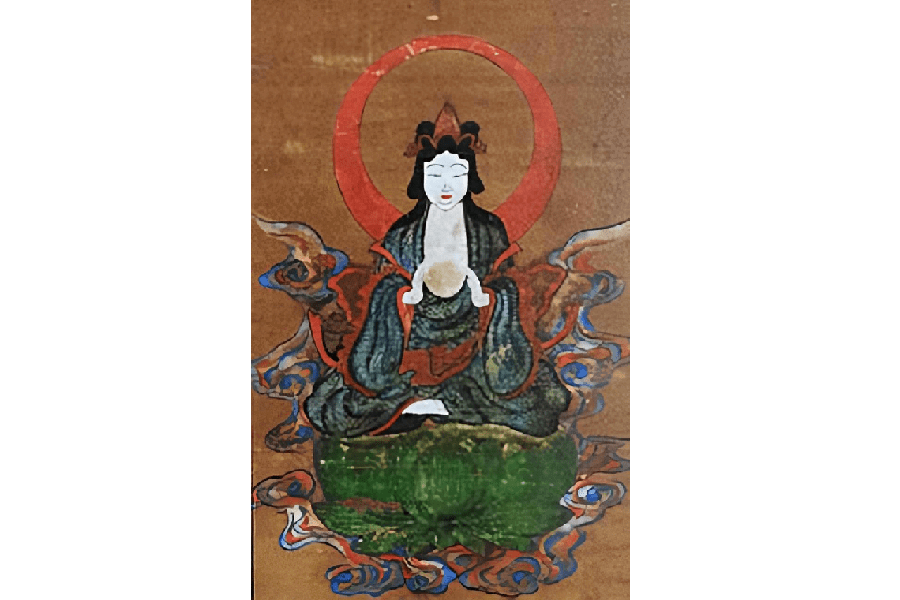
Meaning of the name: Moon Reading
Other facts: Willing to break his etiquette in order to enforce it on others.
What is opposite to the sun? According to Japanese mythology, it was the moon. The moon god Tsukuyomi was responsible for this celestial body and its influence over the earth. In fact, Tsukuyomi was not only the brother of Amaterasu but also her husband. Or rather, the initial husband of the sun goddess.
Tsukuyomi was quite the character and a violent one at that. One Japanese night after sunset, he killed Uke Mochi, the Japanese goddess of food. Uke Mochi was a close friend to Amaterasu, which put an end to the marriage between the sun goddess and the moon god.
Their separation created a division between day and night, the sun and the moon. The moon, normally related to some darker figure than the sun, was attributed to Tsukuyomi.
But, was Tsukuyomi actually such a dark figure? Well, he killed Uke Mochi because he didn’t like her behavior. He simply didn’t like how the Japanese goddess prepared the food during a feast that Tsukuyomi attended. So it’s justified to call him a somewhat dark figure and grant him a position in the darker realm after the separation of the two gods.
Because of his temper, the Japanese god was often seen as the epitome of evil spirits or the evil kami. Still, Tsukuyomi is rather unique.
In many mythological traditions, the moon is related to a goddess rather than a god. Take, for example, Selene, from Greek mythology.
Tsukuyomi in Japanese mythology is unique in the fact that he is a god, thus male, in a realm of goddesses.
Susanoo: The Japanese God of Storm
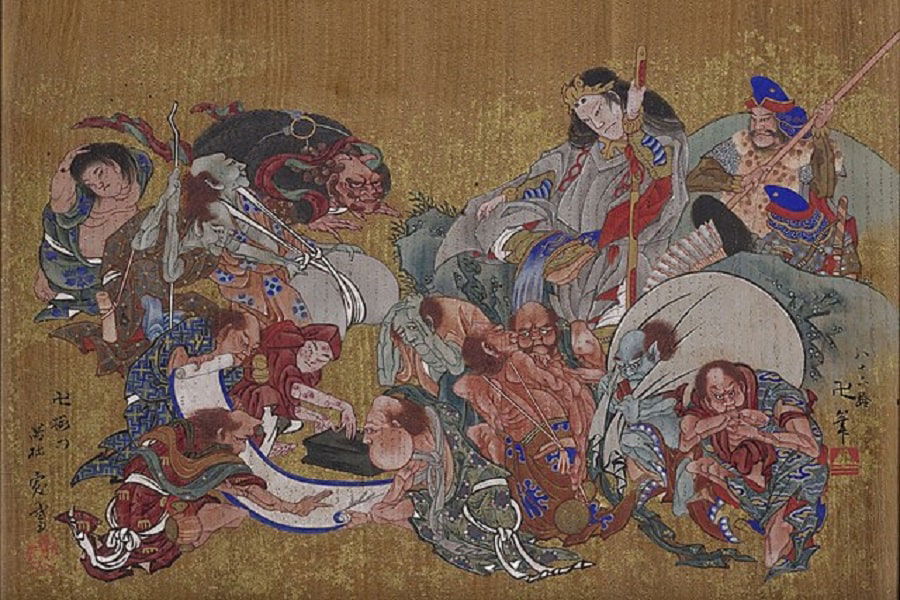
Meaning of the name: Impetuous Male
Other facts: Didn’t back down from an eight-headed dragon, eventually killing it
The younger brother of Tsukuyomi was Susanoo, the storm god. Mischievous and destructive as he was, the Japanese god was widely worshiped in Japanese culture. If anything, Susanoo was the most prominent trickster god of Japan.
A storm, of course, needs wind, something to which Susanoo is also related. However, he would rather only manage it a little, since he had some other gods to do so. Other than that, Susanoo is related to the realm of the sea and more recently, even to love and marriage.
From the very beginning, however, Susanoo caused a lot of trouble for himself and, more importantly, his family. At one point, he was simply bringing terror to the land of Japan with his powers, destroying forests and mountains while killing local inhabitants.
While some gods were there for the protection of rice cultivation, Susanoo was just straight up inhibiting the Japanese citizens from food. Izanagi and Izanami, his parents, couldn’t let this happen and banished him from heaven. From here, Susanoo would set up shop in the underworld.
Kagutsuchi: The Fire God
Meaning of the name: Incarnation of Fire
Fun Fact: A rare case where the parts are more valuable than the whole.
Kagutsuchi is another major kami and offspring of the creators of the Japanese archipelago, Izanagi and Izanami. Sadly for the couple, the fire god would be the last deity that they could put on this earth (while alive), since the birth of the deity resulted in the burning of his mother.
So, how did that happen? Basically, Kagutsuchi was a fierce ball of heat. So yeah, carrying that in your womb would be quite painful. Let alone giving birth to it.
Of course, his father wasn’t all too pleased with this. He chopped off Kagutsuchi’s head as punishment. So one death by giving birth and one death directly after birth. However, the legacy of Kagutsuchi doesn’t stop there. The blood that came off his body gushed over the surrounding rocks, birthing another eight gods.
While he was basically dead after birth, his body parts would continue his story. Many of his body parts would go on to ‘give birth’ to more gods, which often represented different types of mountains. As expected, some of them would turn out to be the gods of volcanoes.
The fire god was a rather feared god in Japan. This mostly has to do with the simple fact that all buildings were wooden. Therefore, if you made Kagutsuchi mad, it was quite possible that your house would be burned to ashes. In fact, many buildings and palaces were burnt in Edo, modern-day Shanghai, because of such fires.
Raijin: Thunder God
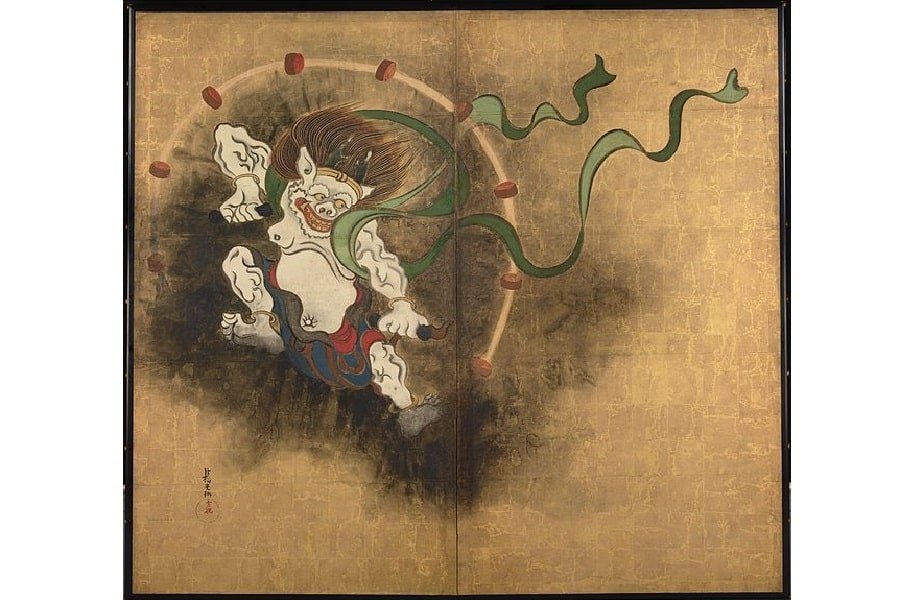
Meaning of the name: Lord of Thunder
Other facts: Also seen as the protector of good harvests
Raijin, the god of thunder and lightning, is essentially the Zeus of Japan. His facial expression is one of his main assets. It basically builds up his frustration and at its very peak, his face is forced to relax; releasing all the frustration and built-up energy.
Raijin was born after his mother died, so he is equated with death in Japanese mythology. That goes to show that thunderstorms have left a giant impact on the society of Japan, leaving many dead and more injured. Raijin is believed to fly across the sky by hopping from one dark cloud to another, throwing his lightning bolts at unsuspecting victims.
The fact that he is so thoroughly related to death doesn’t mean that he isn’t popular among the people of Japan. In fact, he is one of the Japanese gods and goddesses that is depicted most often in Shinto and Buddhist imagery, as well as in folk belief and popular art. In some accounts, Raijin is believed to be a trickster god.
Fujin: The God of Heavenly Wind
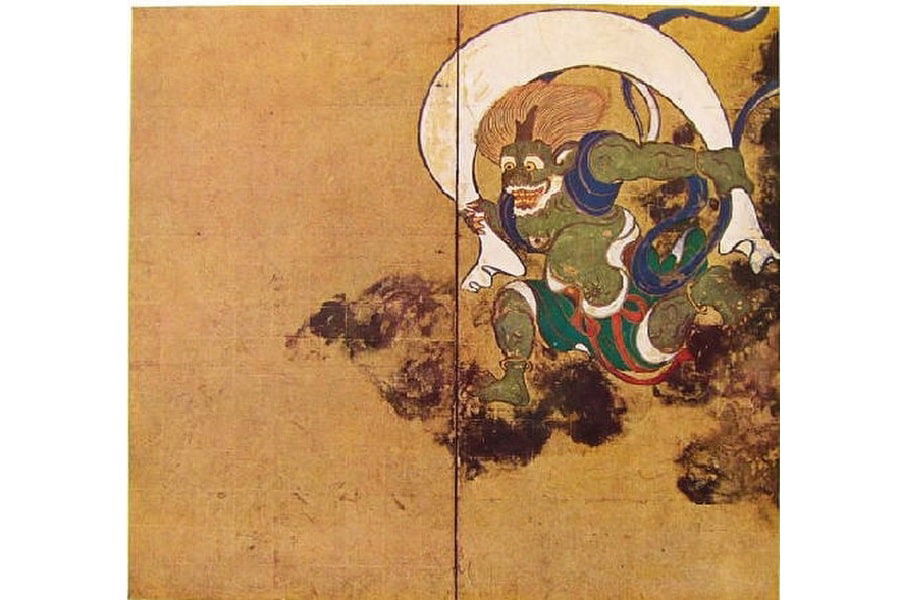
Meaning of the name: Wind god, or heavenly wind
Fun fact: Was born in the underworld
Raijin’s little brother, Fujin, is regularly seen beside him when the two are depicted in artworks. He is another kami that can be related to the aspects of a storm, namely the wind. Well, in fact, he is typically referred to as oni, which is a demon or a devil. So while Susanoo is normally seen as the god of the storm, Fujin and Raijina are more so the devils of the storm.
The Japanese oni of wind is just as popular as his brother, but potentially more feared. The great god carries around a bag of air, which he uses to influence the winds of the world. Indeed, he could easily initiate a typhoon if he fumbled the bag.
The manifestation of the divine spirits in everyday life becomes very evident in a battle Japan had with the Mongols in 1281. The two kami were thought to be responsible for the so-called ‘divine wind’ that helped ward off the Mongols when they invaded.
So while the two kami were feared, they were praised for their ability to wear off intruders and outside attacks.
Seven Lucky Gods: The Joy of Japanese Mythology

The seven lucky kami really introduce the importance of Buddhism in Japanese mythology. They are generally believed to be a combination of Buddhist kami and Shinto kami.
Still, many of the Seven Lucky Gods are descendants of Izanami and Izanagi. So by no means, we move away from the Shinto religion. Rather, the Seven Lucky kami represent the intimate relations between Japanese Buddhism and Shinto religion.
As expected, the Seven Lucky Gods, or Shichifukujin, is a group of gods that bring good fortune and compassion to the citizens of Japan. Every single god represents a different domain, but altogether they are the epitome of prosperity and luck.
According to Japanese mythology, the group travels across Japan throughout the year to spread their spirits. They gather again during the New Year to feast together. Sometimes, they sail from here in a great vessel called the Takarabune.
Many of the gods are not actually from Japan, which also explains their partial rooting in Buddhism. So, they all covered a different form of luck. Who, then, are the Seven Lucky Gods?
Ebisu
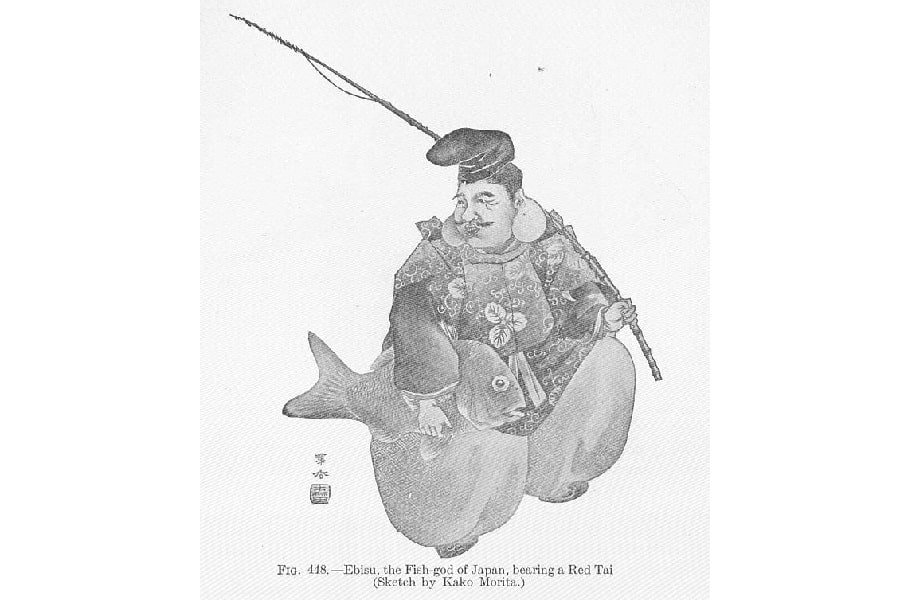
The only member of the Seven Lucky Gods that fully descends from Japanese culture goes by the name of Ebisu, the god of prosperity and good fortune. More often than not, he is also related to commercial activities and being a successful businessman. So for all entrepreneurs out there, it might be wise to build your Ebisu shrine.
He is known as the patron god of fishery and the manifestation of the modern world. Ebisu is often thought to be the first child of Izanami and Izanagi.
Daikokuten

The second member of the group goes by the name of Daikokuten, the god of luck and fortune-seeking. He is smiling all the time, a smile he uses for his somewhat mischievous deeds. That is to say, he is not just a god of luck but also the god of thieves. Those who steal in good humor and get away with it are blessed by Daikokuten.
Other than that, Daikokuten walks around with a bag of treasure so that he can give presents to the ones he favors. Sometimes, Daikokuten is actually portrayed in a feminine form, known as Daikokunyo.
Bishamonten
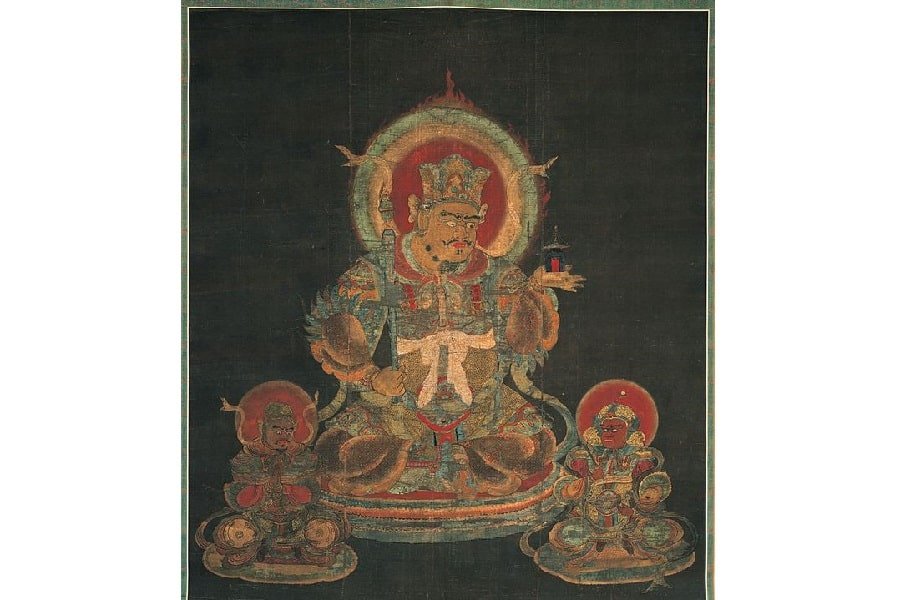
The connection to Buddhism becomes very evident with Bishamonten. God of war, a patron to the fighters, and a promoter of dignity, authority, and honor. Bishamonten can be related back to the Buddhist deity Vaisravana. But really, he combines aspects of both the Buddhist deity as well as some other Japanese deities.
His importance as a war god, however, is definitely rooted in his role as a Buddhist deity. In fact, as Vaisravana he is known as the protector of Buddhist temples.
READ MORE: The History of Buddhism
Benzaiten

Another relation to Buddhism can be seen in Benzaiten. Or rather, to Hinduism, since Benzaiten is basically a form of the Hindu goddess Saraswati. In Japan, she is seen as the patron of beauty, music, and talent.
Jurojin (and Fukurokuju)
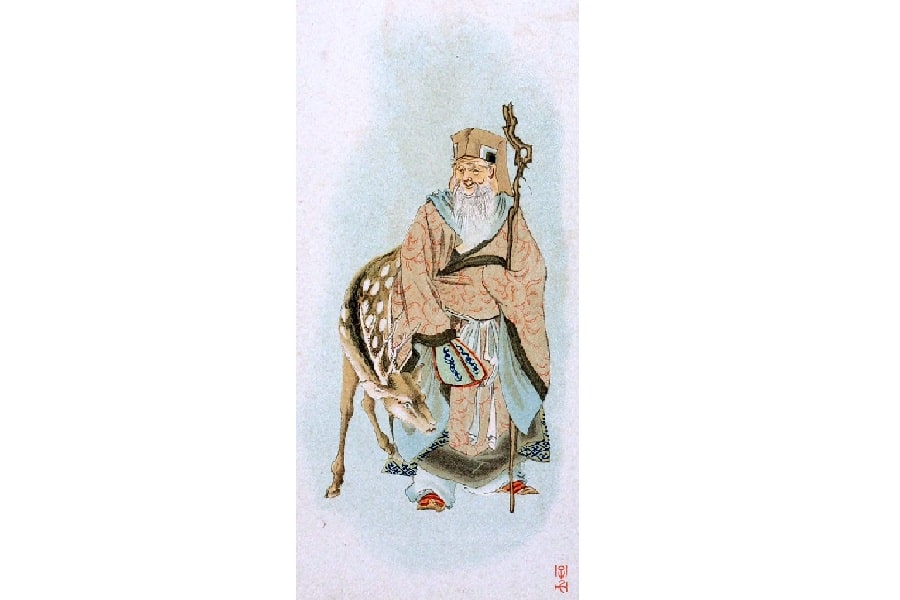
Moving over to the Chinese tradition as Jurojin is originally a Chinese Daoist monk. In Japanese history, however, he carries the exact same name. But technically, they are different.
READ MORE: 15 Chinese Gods from Ancient Chinese Religion: The Eight Immortals, Dragon Gods, and More!
Jurojin is associated with the Southern Polestar and loves to ride around with his deer. As a deity, he represents longevity and prosperity. Besides that, he is often related to the consumption of wine, rice, and the good times that come from feasting these Japanese treats.
Jurojin is, however, often interpreted as sharing the same body as his grandfather, Fukurokuju. Sometimes Fukurokuju is mentioned as the real seventh lucky kami. In later interpretations, however, he is more so discussed in combination with his grandson Jurojin.
Hotei
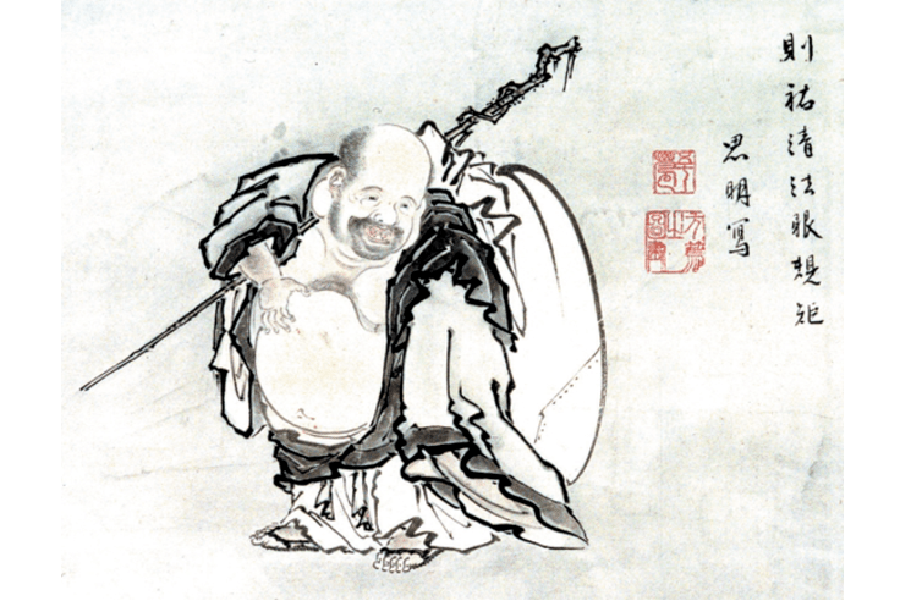
Hotei is the god of prosperity, popularity, children, diviners, and even bartenders. So for all of you who are struggling with serving out drinks to impatient customers, Hotei got your back.
The deity finds its roots in Zen Buddhism. In fact, you probably know what he looks like. Ever seen the large, round, smiling figure of what many Westerners believe to be the true Buddha? The one that is often referred to as the Laughing Buddha. That’s actually Hotei.
Kichijoten
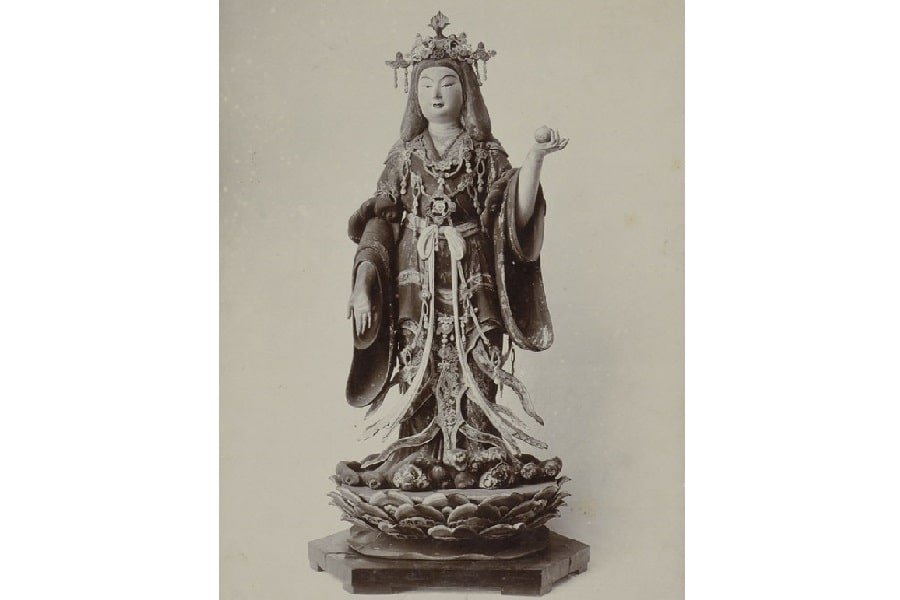
Kichijoten is the Japanese goddess of happiness and fertility to couples. Kichijoten has not always been part of the Japanese myths surrounding the lucky gods.
Before, it was Fukurokuju that was the true seventh god. However, nowadays, Kichijoten takes this place. She is represented as a smiling, courtly woman holding a Nyoihoju jewel, a wishing stone common in Buddhist imagery.